
Education is not just about scoring an ‘A’ in English or maths or the sciences — it’s also about being involved in activities that enhance your child’s character by exposing her to new learning opportunities and experiences.
Take your own experiences for example. What is it that you remember most fondly from your school days? Is it mastering math or being a whiz at general knowledge, or are your fond memories all about that unforgettable zoo excursion you and granny went on? Or was it that particular incident when you stood up to the class bully and showed him his place using your kung-fu skills?
Such real-time, real-life experiences are known as enrichment and are an important part of a child’s education as well. As a matter of fact, enrichment basically means making an activity more meaningful, rewarding and memorable. Creating new experiences, expanding your child’s learning, and making life more fun.
Enrichment classes also help build what we call character. Character is a set of attitudes, skills and behaviours one acquires through experiences – such as self-control, confidence, social skills, motivation, and resilience. These social and emotional skills play a vital role in helping a child respond correctly to difficult situations, work well with others, build relationships, and manage emotions. All are fundamental to success later in school and beyond.
Enrichment classes during early years matters

Enrichment programs set the foundation for the development of critical social and emotional knowledge and skills. They also teach children leadership as well as group skills. Furthermore, it is a natural tool that children can use to build their resilience and coping skills.
Conception to age 2
With adequate stimulation, a child’s brain forms neural connections at a pace of at least 1 million per second. These connections happen even faster in a loving and caring environment and contribute to positive socio-emotional development.
3 to 5 years
Often referred to as the “preschool period”. Children’s language, socio-emotional and cognitive skills are rapidly expanding. During this period, the stimulation and learning that come from play, reading, singing and interacting with peers and caring adults at home and in quality early education settings are essential. Play in the preschool years enables children to explore the world around them, develop their imagination and trigger creativity.
6 to 8 years
Play-based learning continues to be critical even when in primary school. However, play is relegated to a back seat as the focus shifts to academics. Yet, in this period, active, play-based learning approaches can transform the educational experiences of children and strengthen learning motivation and outcomes.
Why enrichment is such a big deal?
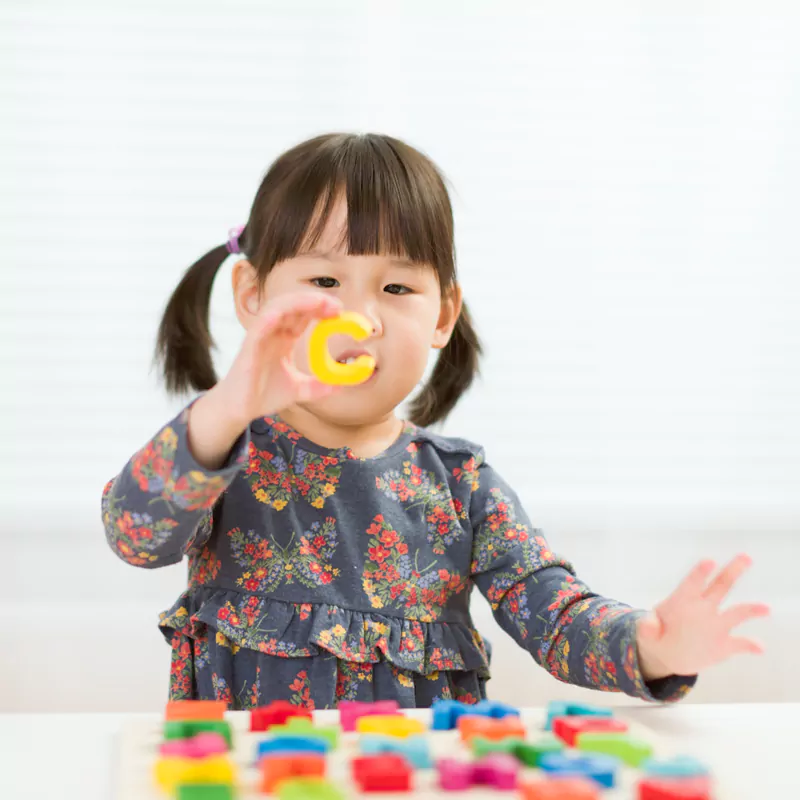
Children find enrichment activities exciting and provides them with a well-rounded, culturally rich means of education that enhances their learning. Enrichment gives children opportunities to try new and a variety of engaging activities that may not strictly fit into any curriculum. It helps develop their resilience and the motivation to pursue higher goals. It teaches life skills and inculcates an appreciation for teamwork and a commitment towards social responsibility.
Increased sense of the self
Many people who are bored don’t understand why they are bored. They often question why they aren’t as engaged as some of the people they know. They may even worry that they have some type of issue. Similar is the case when it comes to young children, except in this case, it is their parents who are concerned and worried.
To put it in a nutshell, enrichment programs help children understand why they are feeling so under-stimulated and offer an effective solution to overcome the feeling of being disengaged. These programs relieve any anxiety about feeling different from others while helping improve confidence once a child is able to see her true potential.
Improving study skills
Enrichment programs teach study skills in the right way, including time management and test preparation. They also promote and prepare young children to acquire self-directed learning skills. These basic study skills help toddlers as they grow up and move into kindergarten as class material becomes more advanced.
Increasing interest In learning
When students are disengaged, their passion and interest in learning decrease. They don’t get excited about involving themselves in play or going out and may even “switch off.” Enrichment programs work to re-ignite a child’s interest and ensure deeper engagement with the material they are handling.
Raising motivation
Young children are more motivated to succeed when they feel challenged. With an enrichment program, parents get to present their young children with concepts that both challenge and engage them, resulting in higher motivation overall.
Bespoke learning
Whether parents like it or not, young children learn at their own pace and resist being pushed. They feel more motivated to learn when there is less pressure. With enrichment programs, you as a parent can customize play sessions to suit a child’s own pace.
Learning through play

Play is one of the most important ways in which young children gain essential knowledge and skills. For this reason, play opportunities and environments that promote play, exploration and hands-on learning are at the core of effective enrichment programs.
Play is meaningful and children play to make sense of the world around them and to find meaning in an experience by connecting it to something already known. Through play, children express and expand their understanding of their experiences.
Play and learning are not static. Children play to practice skills and discover new challenges, leading to deeper understanding and further learning. It also allows children to communicate ideas, understand others through social interaction, and pave the way to build deeper and more powerful relationships.
Children are ‘hands-on’ learners and acquire knowledge through playful interaction with objects and people. For example, by playing with geometric blocks they grasp the concept that two squares can form a rectangle and two triangles can form a square.
Making enrichment happen at home
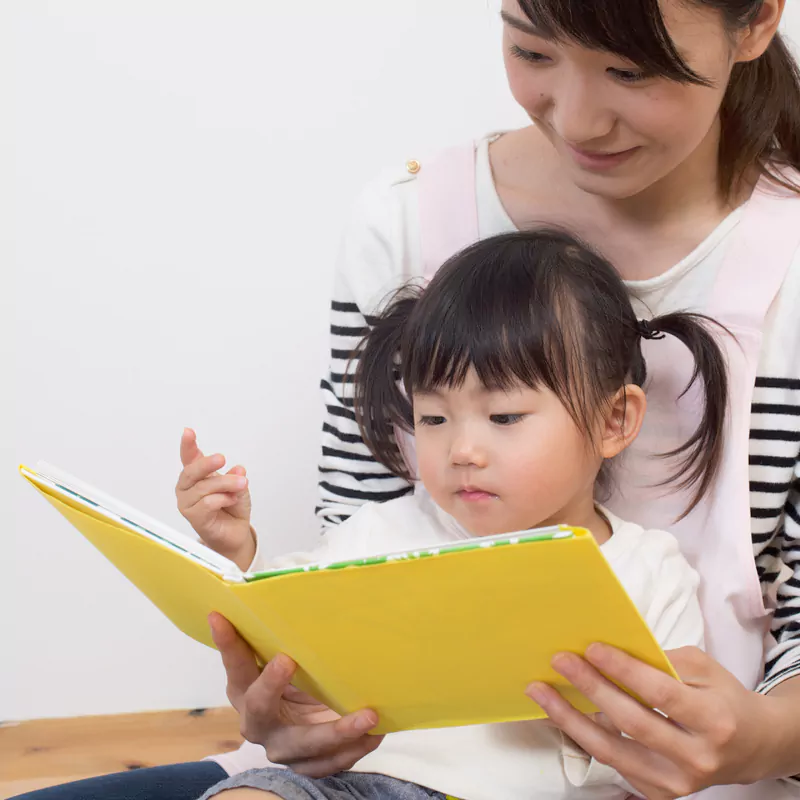
You probably already do a lot of enrichment activities at home without realising it. Reading together, roleplay games, singing, dancing, painting and drawing all count, and work to make a big difference in the attitude and behaviour of young children.
Interacting and helping your child find answers to her many questions is a form of enrichment. Having patience when dealing with her relentless questioning will feed her curiosity and leads to more questions. Keep your cool and answer as best as you can.
When unable to answer, find someone who can. This will reinforce your child’s confidence in you and makes her understand that she can come to you whenever there is a question that needs an answer.
The idea is to help your child expand her knowledge base and widen the resources that she can access. Participating in enrichment activities is a great way and is an easy path to meet other children and learn from each other.
In early childhood, learning takes place at a phenomenal speed. Apart from this, learning through play builds lifelong learners and supports a child’s overall development.
Don’t wait, start right away!
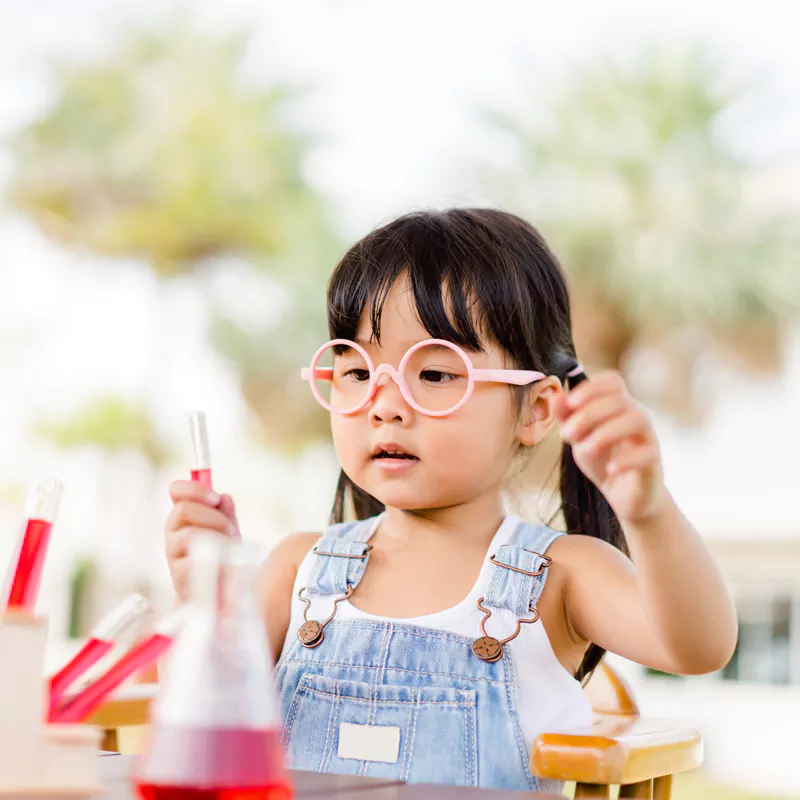
“Research over the past 30 years has taught us that the most important period of human development is from birth to eight years old. During these years, the development of cognitive skills, emotional well-being, social competence and sound physical and mental health builds a strong foundation for success well into the adult years.” [Source]
Remember, young children do not only learn in formal settings. The home environment is where young children spend the largest part of their early lives, interacting with parents, siblings, extended family members, and neighbours. These interactions and relationships have a significant influence over how they understand and experience the world around them.
Home environments provide excellent opportunities to promote learning in the early years. Primary caregivers, such as parents, are the biggest supporters of children’s learning, and therefore have an important role in creating the space for learning. Empower them to take an active role in shaping children’s learning and development, as well as to facilitate playful learning at home creating an abundance in day-to-day experiences.
Create a sensory board for your baby
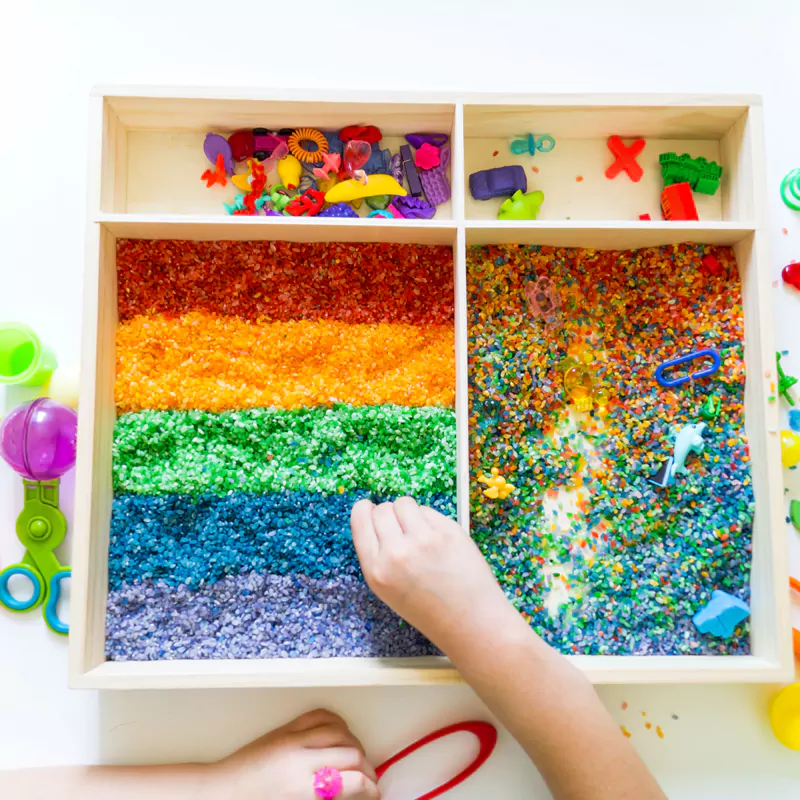
A sensory board is the most effective way to support your child’s sensory experiences and gives you many opportunities to teach. It is a fun way to explore a range of textures and sensations and to stimulate a child’s sense of sight, sound, smell and touch.
Sensory boards encourage natural curiosity and investigative skills and help children to develop their fine motor skills as they coordinate their movements to feel the different materials. Babies and toddlers develop preferences as to which textures they like and dislike. A sensory board can also help children learn new words too as you support them to describe the different things they are feeling.
It is easy to create your own sensory board. All you require is thick cardboard, and items that would intrigue a toddler, buttons, switches, an acrylic mirror, shells, a swatch of silk cloth, leather — anything that might be engaging for a baby and beyond.
Stick all of them in rows with double-sided tape to the cardboard and hang the board close to the ground so that it can be easily reached by your sitting baby. Your sensory board is now ready for your baby!
Help your baby develop fine motor skills
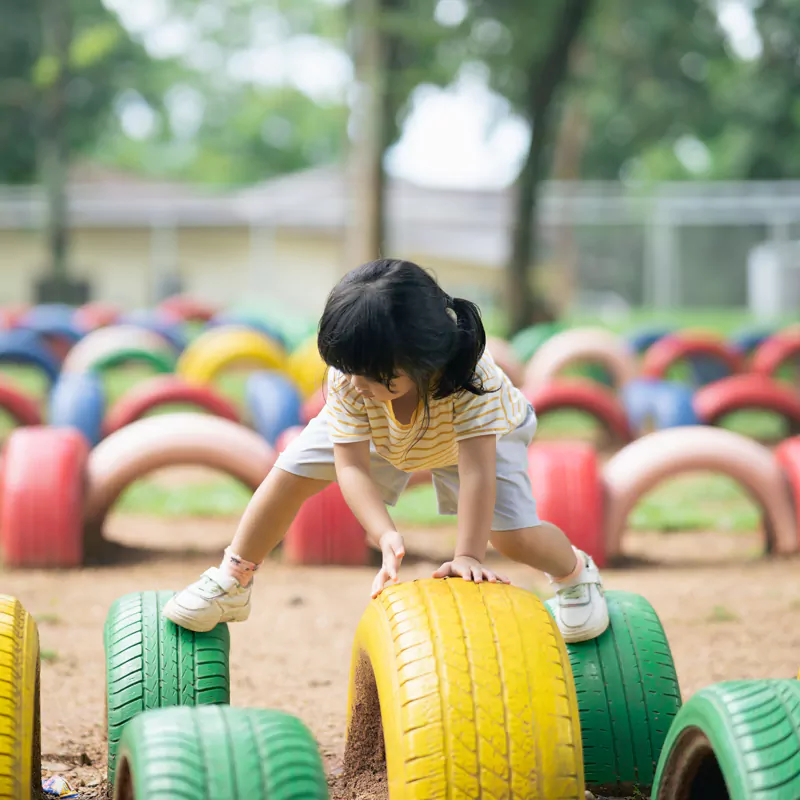
Babies are busy developing their fine motor skills even from just a few months old. It will be great if you can participate and create more opportunities for your baby to practise her fine motor skills throughout the day!
Some great times to work on fine motor skills is when your child is sitting in her highchair or during bath time. When babies begin to eat regular food, give them small finger foods. Watch her pick up the food with her small fingers and lift it up and put the food into her mouth. Developing the fine motor movement of her hand and improving her hand-eye coordination skills.
When in the bath, allow your baby to fill empty containers and spill water. This will encourage her to move her hands and to explore things floating around her. Or blow bubbles and let her try and catch or pop them will also encourage them to use both their hands.
For small infants who aren’t ready for these types of activities, tummy time is the best time to encourage your baby to use her hands. Stacking blocks, pushing blocks through holes, using rattles and noisy toys, and encouraging her to pick up and hold things in her hands.
Hopping on to coloured circles

Gross motor activities for toddlers are generally very simple to create and don’t require a lot of prep time. Here is one that combines learning with movement and helps toddlers retain what they learn. Draw large coloured circles on the pavement with chalk and fill them in. And the game is ready for your toddler.
The most effective way to involve your toddler in this colour recognition game is to start playing it yourself. Hop onto one colour circle and call out the colour, do it a couple of times and your toddler will almost always want to join in the fun!
Shape activity for toddlers
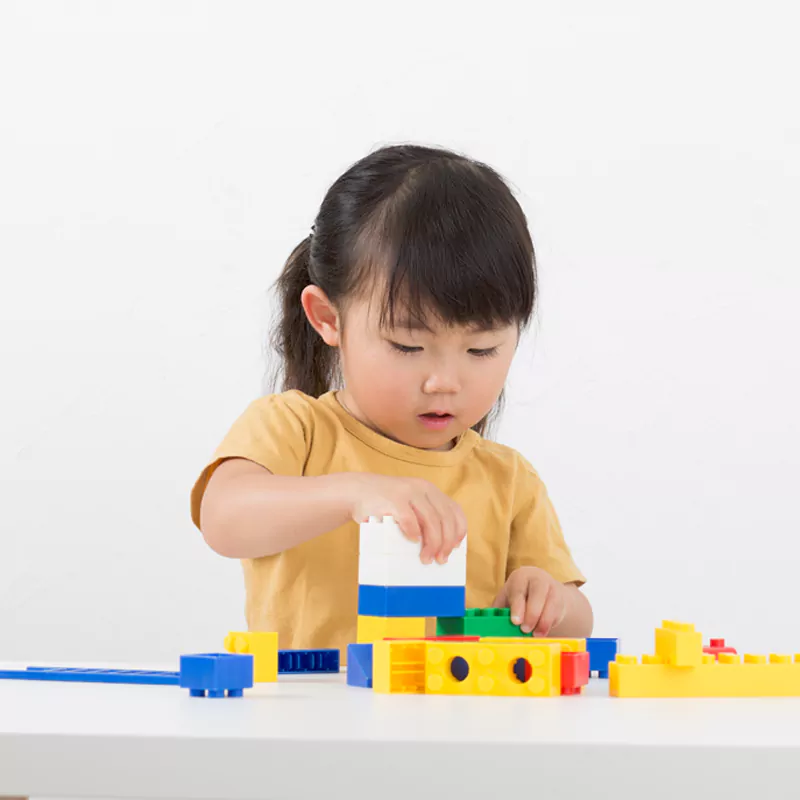
first art activity because it uses motion, and toddlers love to move. The tube fits easily in the palm of their hands, too.
It also helps keep some distance between the paint and the hands. Some toddlers might not like the queasy feel of the paint. Your goal is to make your toddler feel comfortable. There are times when other toddlers use cardboard tubes as telescopes. Give credit to their imaginations!
Threading a pasta necklace
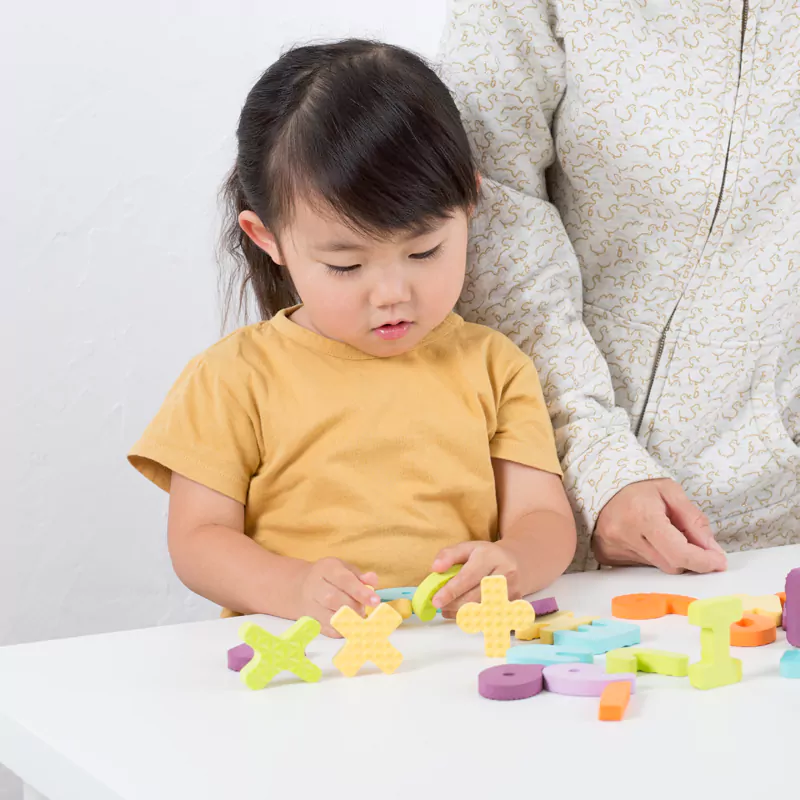
This is one of those activities that your toddler will love because she can make it all by herself too! And the necklaces are so easy to make. All you need to do is thread the string through each pasta piece. Show your child how this is done.
You will also love making it together with your child. While making these gorgeous pieces, talk about the colours, teach her about patterning and ask to whom she wants to give the necklace to. This activity extends to developing her fine motor skills as well.
Learning numbers by filling them
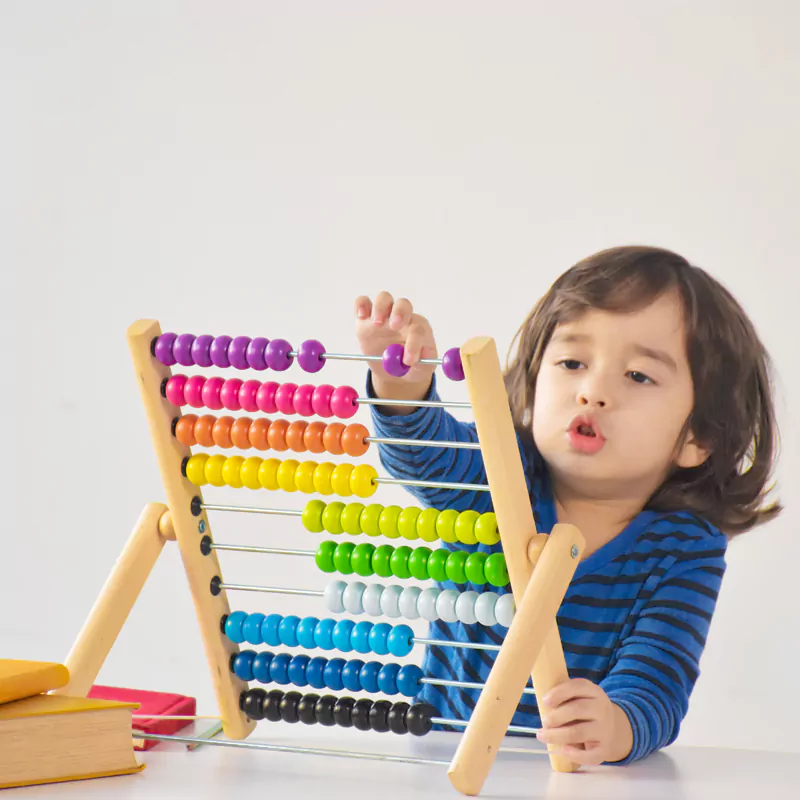
Number filling activity is an excellent idea for your toddler to practise. While this activity is super easy to prepare, it will keep your toddler busy and learning at the same time! All you need is a piece of paper, coloured markers, ear buds and washable paint. You can set it up in under five minutes! You first outline the numbers zero to nine using the marker and then ask your child to fill in the outlined number using the earbud dipped in a colour. As she fills the outline, get her to say the number aloud. Remember to use a different colour for each number she fills. Filling in colours is fun and an excellent way to improve pre-writing skills, and helps your child familiarize with numbers, and colours at the same time!
Using Post it to learn the Alphabet
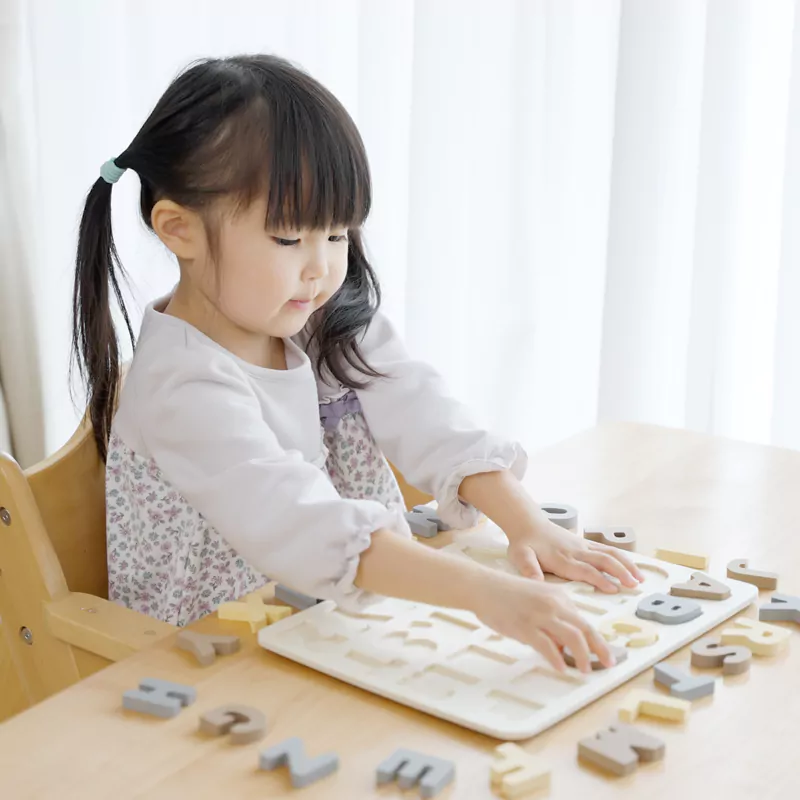
Bear in mind that children get to learn the alphabet at different ages. Some will learn the alphabet by the time they are at two years old. Some others pick them up when they are attending a preschool. While still some others will get down to it around the end of kindergarten.
No need to fret though. Because there’s no better way to recognize and memorize the ABCs than by playing with the ABCs, and doing this at home! Here is how you can begin.
Roll out a long sheet of wax paper and cut it. Tape the sheet onto the dining room wall, and start writing the alphabet A to Z in one long row in all-caps. Spacing each letter leaving one Post-It note wide. Here’s why.
Children often see the alphabet all broken up, be it in puzzles or books, and rarely do they see the alphabet written in one long line. Seeing them in one long line will help your child get the sequencing right without getting confused.
Then on 26 separate Post-It Note sheets, write the alphabet in capital letters, and stick them on your dining room table, mix them up. Get your little girl ready to go and match each Post-It with an alphabet written on it to the sheet of wax paper stuck on the wall. It will not only be a challenge that will be a little intriguing but also full of fun for both of you!
Alphabet posting is a tested and proven way for your child to learn the alphabet without pressure. Not ready for letters yet? No worries! Try matching shapes (drawn on the Post-Its) to shapes drawn on the wax paper. Matching practice is awesome, no matter what.
Activities like this are great because it involves a little gross motor and fine motor element to the learning: running back and forth from paper to table is a perfect moving activity for your child. And manipulating the Post-It Notes takes some intricate hand and finger movements.
About My Gym
My Gym involves children in dynamic games, physical activity and movement that help in building neural networks in the brain. Customizing its enrichment programs and workshops to make it easier for children to acquire intellectual skills, navigate complex social situations, and nurture emotional development.
Please visit any of our centres to learn more about how My Gym supports “whole-child development” through bespoke enrichment classes. Choose a day when you will be relatively free and come over with your child in tow. Your child could be an infant (as young as 6 months), a toddler or a preschooler, age is not a bar for enrolling.
My Gym has specially designed enrichment programs that lay a firm foundation for personal, academic and future growth by involving your child in age-appropriate structured and unstructured physical activities and developing thinking and problem-solving skills.



























